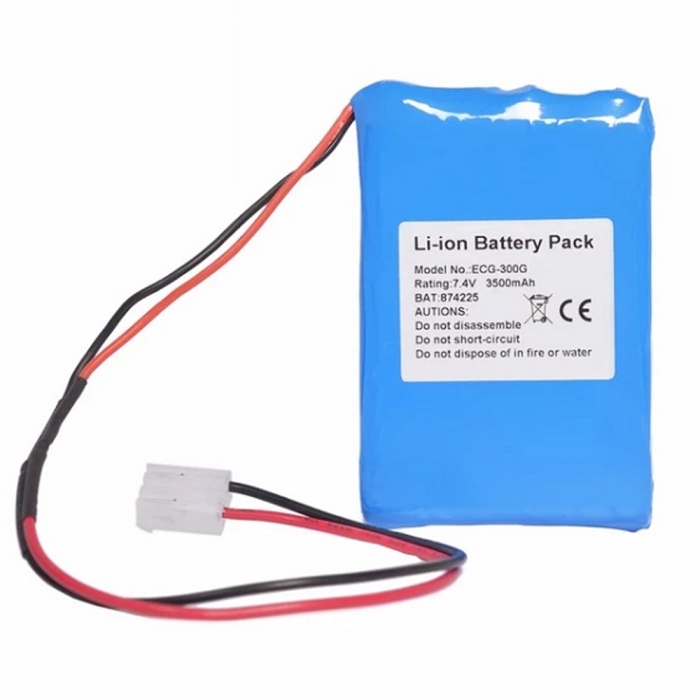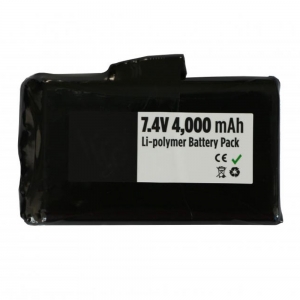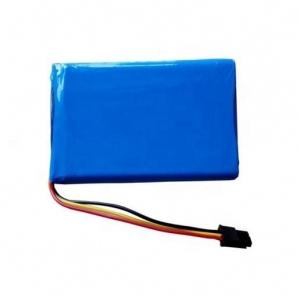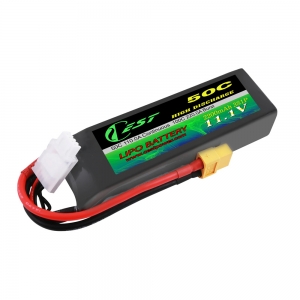Categories
Contact Us
Fax:0755-8352 6624
Email:sales08@cestpower.com
Add:Block F, Hengtai Industrial Park, No 56, Guan yuan Road, Guangming District, Shenzhen, China
ECG-300G rechargeable lithium li polymer battery soft pack 7.4v 3500mah lipo 74v for medical instrument device electrocardiograph
Product Description
While today’s rechargeable battery don't suffer from the memory effect that was common with old technologies like nickel-cadmium battery — where the battery would lose capacity if it wasn’t fully discharging before recharged again — modern battery such as sealed lead acid still have a failure mechanism; a gradual rise in the internal impedance.
As the internal impedance increases, any sudden need for power, particularly from motor-driven devices like dialysis machines and ventilators, can draw plenty of power, lead to voltage dropping; not an ideal specification for medical device.The most common mistake that I’ve seen equipment manufacturers make when matching a battery to a tool isn't selecting A battery with an inside impedance appropriate to the load. If the load current is high, or it's high pulses, and thus the battery features a relatively high internal impedance, then the drop under load are often severe. It leads to 2 problems. at first, the battery will heat up and a waste of power, secondly, battery will rapidly reach the device’s cut-off voltage.
Internal impedance
A battery’s internal impedance is made from two factors: electronic and ionic impedance. Electronic impedance encompasses the resistivity of the actual materials that make up the individual cells just like the cell cover, can, and current collectors, as well as the soldered interconnection parts between cells and elements like wires, connectors, FETs, fuse and sense resistors. Ionic impedance is that the impedance to current flow within the cells because of electrochemical factors like electrolyte conductivity, ion mobility and electrode area . The combination of these factors makes the whole effective impedance, which finishes up during a voltage dropping when battery is under loading.
Effective internal impedance is usually calculated by placing a completely charged battery under a current load, typically 0.2CmA, for 10 seconds. Once this has elapsed, the current is instantly increased to a far better level, typically 1.0CmA, and this is often often held for 1 second. Ohms law is then used to calculate the impedance supported the difference between the two on load voltages and currents.
Supplier A features a effective impedance, calculated at 60mΩ, which finishes up during a minimal voltage drop and a temperature rise of only 14 degrees. Supplier B features a muchhigher effective impedance, calculated at 215mΩ, which finishes up during a severe drop and 38 degrees temperature rise.
Temperature
Ultimately, battery normally works best at regular temperature . a much better ambient temperature may offer better short-term operation by making charging and discharging reactions more efficient and reducing internal impedance.
On the other side, continuous operation at high temperatures also results in unwanted reactions between electrodes and a breakdown of the battery structure, result in a irreversible reduction on performance.
Fast charging
Temperature is additionally the rationale why fast charging, despite the benefits it offers, is not conducive to the long-term health of the battery. At May 2017, it had been reported that Tesla limited the charge rate on vehicles be charging with its 120kW Supercharger to only 90kW if the vehicle had already accumulated lots of DC fast-charge experience. the company released a handout explaining the limits. max charge rate of lithium ion cell probably decrease gradually after a huge amount of high rate charging times. this is generally due to physical and chemical characteristics of the cells.
To maintain safety and retain maximum range, we'd wish to hamper the charge rate when cell is cold, when the status of charging is almost complete, and also when the condition of battery changes slightly under age and usage. It is the best to charge battery at a low current that customers can realistically tolerate, and then only charge it when remaining capacity dropped to A level that there's insufficient capacity left to deliver enough power. In reality, this might usually end during a compromise between the longevity of the battery and the demand from the user. In medical environments where a transportable dialyzer needs to accompany the patient as they move around a hospital, it is vital that the device can be charged rapidly rather than decreasing the quality of concerns delivered to patients.
Battery management
A typical Lithium ion (li-ion) battery be charged in two steps. step one, battery is charged at a continuous current with the voltage keep rising. Once the battery reaches its maximum voltage (normally 4.2V per cell) the voltage is held on constantly and the current is allowed to gradually decrease towards zero. Charge is terminated once it has decreased to a set-up level.
Here, it is vital that the charging voltage isn't exceeded. Because lithium-ion battery may contains many cells in serial , it's wise to use balance circuitthat shuttles the recharge current away from the cells that reach their recharging voltage first, allow the other cells to catch up.
Cell balancing
The most common method of cell balancing is to observe the individual cell voltages and bleed energy away from the cells with the absolute best voltages. The energy is steaming away through resistance and dissipated as heat. Other way to transfer the cell power to charge other cells which wastes lower energy but is more complex to realize. While cell balancing won't turn a nasty cell pack into an honest one, it'll keep good cells balanced and this might confirm the battery are often cycled many hundreds, sometimes thousands of times. Reducing the charge voltage also will promote longer cycle life, albeit with a reduction in capacity per cycle.
Cell balancing operates during 50ms nominal period. voltage monitor happened in approximately 10ms spacing, a balance FET internal to IC is switched on during the last 40ms to offer bypass path. The FET is transitioned again at the highest of the balancing interval to measure the cell voltage. To keep pace with the size and demands of the worldwide medical device market, it is important for design engineers to select proper battery, ensuring the devices still operate within the foremost demanding of environment.








 Cestpower
Cestpower